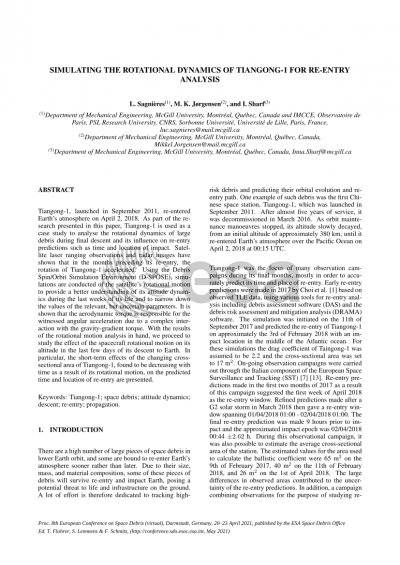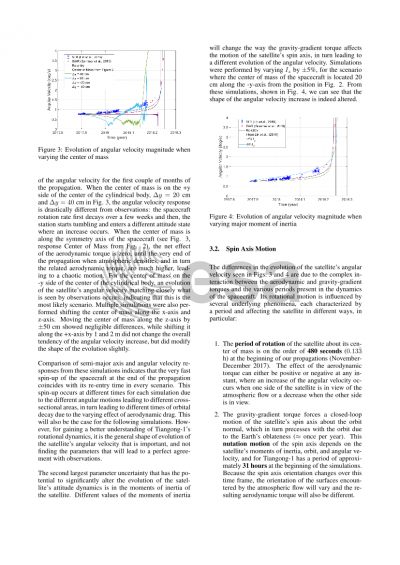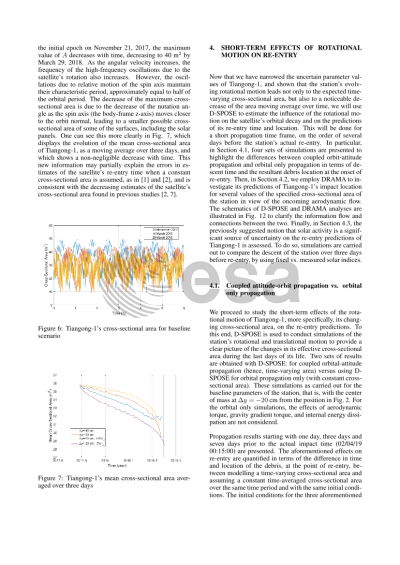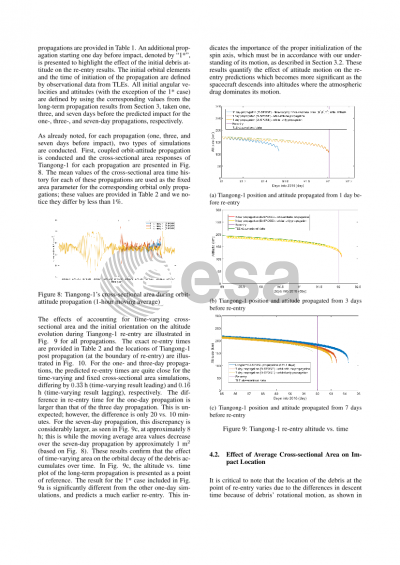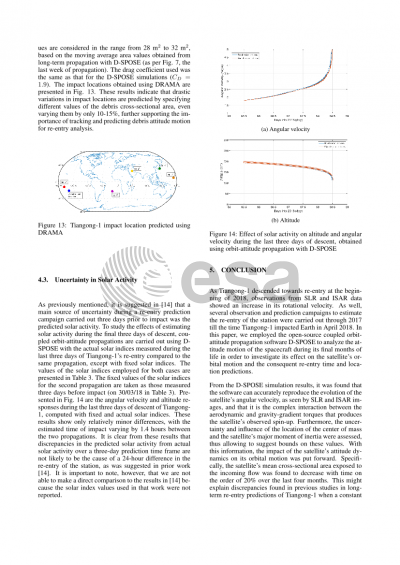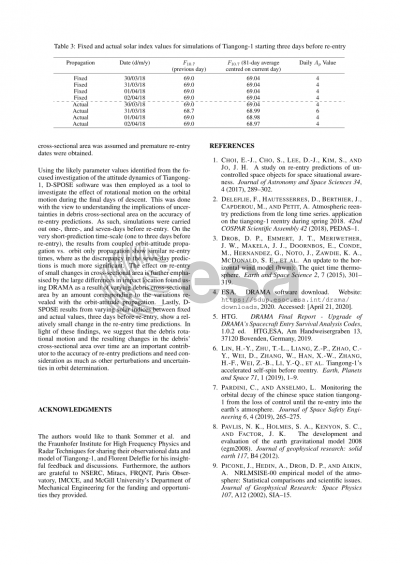Document details

Abstract
Given the high number of large pieces of space debris in lower Earth orbit, some are bound to re-enter Earth’s atmosphere and due to their size, mass, and material composition, these pieces of debris will survive re-entry and impact Earth. One example of such debris was the first Chinese space station, Tiangong-1, launched in September 2011, which re-entered Earth's atmosphere on April 2, 2018. As part of the research presented in this paper, Tiangong-1 is used as a case study to analyze the rotational dynamics of large debris during re-entry and its influence on re-entry predictions such as time and location of impact. Satellite laser ranging observations and radar images have shown that in the months preceding its re-entry, the rotation of Tiangong-1 accelerated. Using the Debris Spin/Orbit Simulation Environment (D-SPOSE), simulations are conducted of the satellite's rotational motion to provide a better understanding of its attitude dynamics during the last weeks of its life and to narrow down the values of the relevant, but uncertain parameters. It is shown that the aerodynamic torque is responsible for the witnessed angular acceleration due to a complex interaction with the gravity-gradient torque. The influence of uncertainties in the spacecraft geometry and inertia properties on its rotational motion are also outlined.
With the results of the rotational motion analysis in hand, we proceed to study the effect of the evolving attitude dynamics of the spacecraft on its orbital motion during Tiangong-1’s descent to Earth. In particular, the short-term effects of the changing cross-sectional area of Tiangong-1, as a result of the rotational dynamics, on the re-entry predictions starting with one day up to 10 days prior to impact are presented. These effects are quantified in terms of the difference in time and location of the debris at the point of re-entry (defined as reaching 120 km altitude) between assuming a time-varying cross-sectional area and a constant time-averaged cross-sectional area over the same time period and with the same initial conditions. The results on the effect of cross-sectional area on re-entry are obtained using D-SPOSE for coupled orbital-attitude propagation (hence, time-varying area) versus using D-SPOSE for orbital propagation only (with constant cross-sectional area). In addition, DRAMA (Debris Risk Assessment and Mitigation Analysis) ---a software suite developed by ESA for space debris mitigation---is employed to conduct the re-entry analysis from ~120 km altitude to impact by using the time-averaged cross-sectional area. Finally, we examine the effect of solar activity on re-entry simulations during the last days of the satellite. D-SPOSE results obtained using both predicted and measured solar activity show only minor differences in re-entry conditions.
Preview
